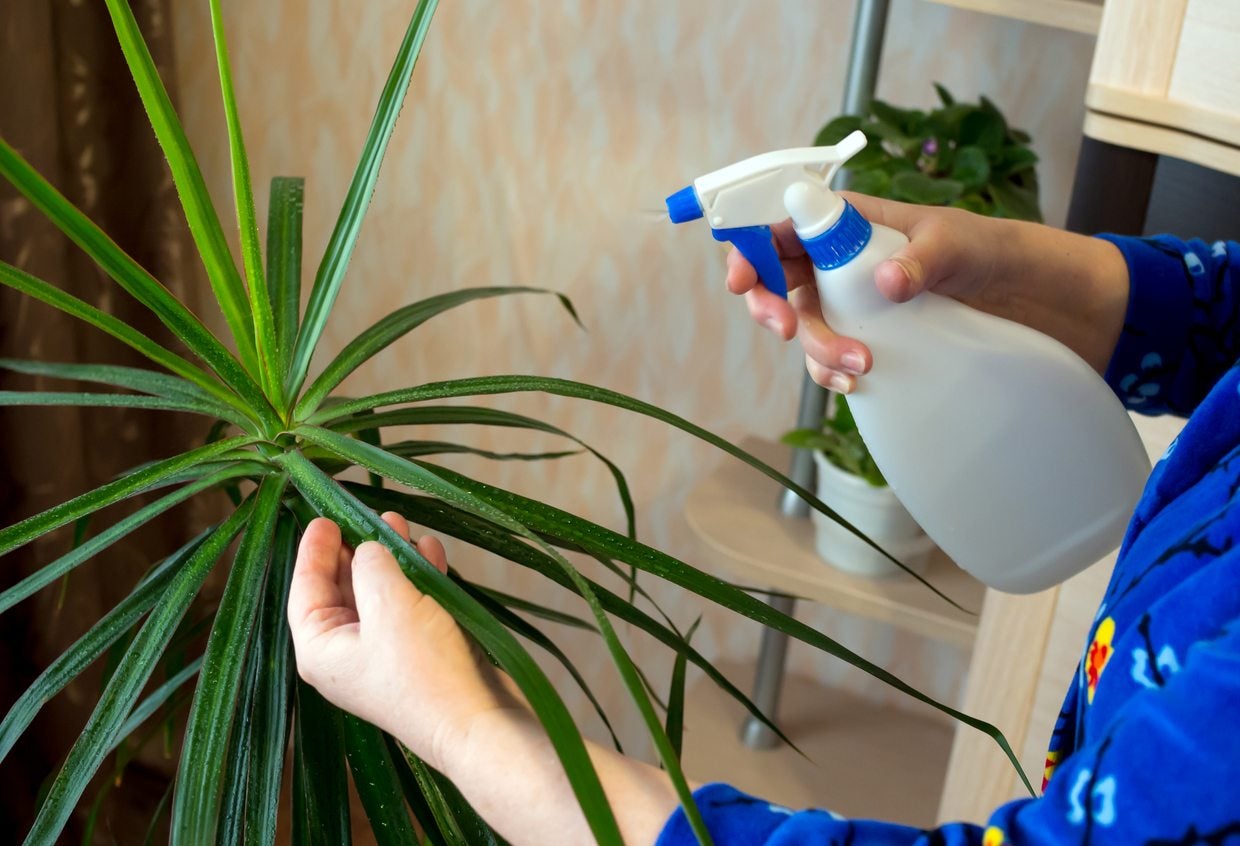Dracaena Pest Control – Learn About Bugs That Eat Dracaena Plants


While pests of dracaena are not common, you may sometimes find that scale, mealybugs, and a few other piercing and sucking insects require dracaena pest control. Too much nitrogen sometimes encourages excessive new growth, which draws aphids and other bugs that eat dracaena and weakens the plant. As you may know, a healthy, adequately fertilized plant is less prone to insects and disease than a weak plant.
Managing Dracaena Pests
Check regularly for dracaena pest problems. Take a look underneath the sword-like leaves, on the trunk, and at the base. A white cottony or waxy mass can indicate mealybugs or soft scale. If you find just a few bugs that eat dracaena, you may blast them off with a strong spray of water. Mealybugs go through stages, with the juvenile stage of crawlers doing the most damage. These pests cause stunting and leaf drop. Scale weakens plants and may lead to the stoppage of growth. A scale may be white, tan, or dark brown with several congregating in an area to pierce and suck the juices from the plant. Ladybugs, parasitic wasps, and other beneficial insects can sometimes control pests of dracaena grown outdoors. For large infestations, move on to insecticidal spray or the neem oil. A swarming mass of tiny bugs around your dracaena plant may be aphids. A strong stream of water might take care of these as well but continue to check that pests of dracaena do not return. Sometimes this piercing and sucking makes the plant secrete a sweet, sticky substance called honeydew. This often attracts ants, who then defend the pests to keep their food source. You’ll want to get rid of aphids and other pests before reaching this point. Usually more effective for the long-run, use an insecticidal soap spray or neem oil. Spider mites, not often visible to the naked eye, are a common pest of dracaena. Small brown or yellow specks or spots on leaves alert you to this problem. Follow the above treatment. There are numerous recipes for homemade pest control sprays available. Some include the most basic soap, water, and oil types. Some soak garlic or hot peppers for use as pest control. Always test a small hidden part of the plant 24 hours before a full spray to make sure the homemade concoction doesn’t cause damage. Some are best used as a soil drench, avoiding the foliage. Some sites advise 70% isopropyl alcohol for managing dracaena pests. Others use hydrogen peroxide and some even swear by cinnamon. For some problematic or heavy infestations, it is best to use systemic insect control containing Bifenthrin.
How to Avoid Dracaena Pest Problems
The best way to avoid dracaena pest problems is to be vigilant about keeping them away. Check for pests in the store before you purchase plants. Seclude new purchases for a few days to make sure no eggs will hatch or no pests are hiding in the soil. Keep an eye on your dracaena if you move it outside in spring. Feed and water correctly as you provide proper lighting. Too much water sometimes attracts pests. A healthy dracaena is better able to ward off disease and bugs that eat dracaena.
Sign up for the Gardening Know How newsletter today and receive a free copy of our e-book "How to Grow Delicious Tomatoes".

Becca Badgett was a regular contributor to Gardening Know How for ten years. Co-author of the book How to Grow an EMERGENCY Garden, Becca specializes in succulent and cactus gardening.